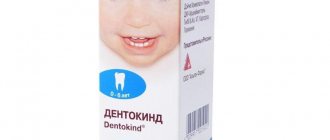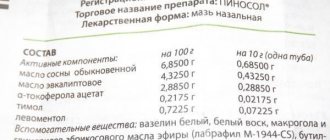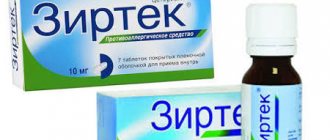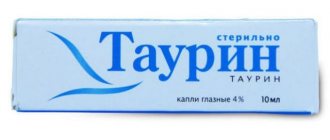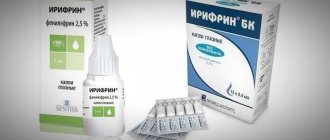03.09.201649659
Galazolin drops are an inexpensive and effective vasoconstrictor that makes it possible to quickly cope with nasal breathing problems. However, using this drug for too long is not recommended. The drug is used in otolaryngology for short-term symptomatic therapy. The use of this drug requires consultation with a doctor.
- LiveJournal
- Blogger
The product has a pronounced vasoconstrictor effect and eliminates nasal congestion and runny nose within 2 minutes of use.
- Composition of Galazolin nasal drops
- Features of using Galazolin for a runny nose
- Contraindications
- Use of Galazolin during pregnancy and for children
Effect of Galazolin drops
Nasal drops "Galazolin" belong to the category of vasoconstrictors (a-adrenergic agonists). They are used for the symptomatic treatment of allergic and inflammatory manifestations of the nasal mucosa.
The action of this remedy is due to local constriction of blood vessels in the arterial bed, and this in turn helps to reduce swelling and restore patency of the sinuses. Thanks to the use of these drops, the secretion of mucus into the nasal cavity is reduced and inflammation is reduced.
The drops are intended exclusively for the nose. Thanks to the use of the product, you can restore nasal breathing within 5-10 minutes after use. And the effect can last steadily for 8–12 hours.
The effect of "Galazolin" on the nasal mucosa is distinguished by its softness, which does not cause local irritation. When using the drug, it is recommended to use it strictly according to the instructions to prevent side effects. The disadvantages of the drug include the fact that it cannot be used for a long time, otherwise addiction may occur. Thus, the maximum period of use of Galazolin is 4 days.
The effectiveness of the drops may be reduced in patients suffering from chronic rhinitis. "Galazolin", like its analogue "Naphthyzin", in this case will act after use for no longer than 4 hours. strictly not recommended to use nasal drops in an uncontrolled manner. Although they are sold without a prescription, you must strictly follow the dosage according to the instructions and consult a specialist before prescribing this or that remedy.
Galazolin eye drops
Each drug has its own indications and instructions for use, which are not recommended to be violated. But it is no secret that sometimes some medications are used not entirely for their intended purpose.
For example, patients often use galazolin eye drops, a drug intended, in fact, to treat runny nose and nasal congestion.
Is it possible to do this? What do Galazolin drops consist of, why and to whom are they prescribed?
General description of the drug
Galazolin is an affordable vasoconstrictor intended for local and symptomatic treatment of runny nose and nasopharyngeal congestion. The drops contain imidazoline derivatives that act on arterial vessels. They narrow, as a result, tissue swelling decreases, the nasal passages widen and congestion decreases or disappears completely.
The effect is felt within 5-10 minutes after administration of the drug and lasts up to 8-12 hours. To obtain the maximum therapeutic effect without side effects, it is important to maintain the correct dosage and not violate the treatment regimen. These are not eye drops; if you use them for other purposes, the risk of the most unpredictable consequences increases.
Galazolin is a vasoconstrictor drop for the treatment of a runny nose.
Contraindications and possible side effects
The list of contraindications is quite extensive; you should study it carefully before using the drug.
Galazolin is not prescribed or used in the following cases:
- atrophic rhinitis;
- hypertension and atherosclerosis;
- angle-closure glaucoma;
- increased intracranial pressure;
- thyroid dysfunction (hyperthyroidism);
- diabetes mellitus and adrenal dysfunction;
- tachycardia.
Some patients experience individual intolerance to the active components of the drug. In this case, the drug is discontinued and an analogue is selected. Galazolin may interact with MAO inhibitors, so these drugs should not be used at the same time. The drug is not prescribed to female patients during pregnancy and breastfeeding.
Side effects that may be of concern during an overdose or a long course of treatment:
- Dry nose, burning sensation.
- Sneezing.
- Redness of the mucous membrane, its irritation and swelling.
In addition to local symptoms, general symptoms may also occur - nausea, vomiting, unstable heartbeat, increased blood pressure, sleep disorders (drowsiness or insomnia), weakness. In severe cases, uncontrolled use of the drug leads to severe swelling and suffocation.
Before using the drops, it is important to study their instructions in detail.
What else do you need to know
Despite the fact that the instructions for use of this drug do not contain any indication that it can be used in ophthalmology, many patients still use Galazolin as eye drops. The question often arises about what will happen if you drop Galazolin into your eyes and whether anything needs to be done in this case.
Doctors answer: “If you inject this drug under the eyelid, the clarity of vision may sharply deteriorate.” In some cases, allergic reactions occur, which manifest themselves as follows:
- redness of the mucous membrane, swelling;
- itching and burning;
- lacrimation.
If you accidentally, through carelessness or ignorance, dripped Galazolin into your eyes instead of other vasoconstrictor drops, you should immediately rinse your vision with clean, cool water. If unpleasant symptoms do not go away but intensify, you need to consult a doctor as soon as possible.
Summary: Galazolin vasoconstrictor drops are an effective and inexpensive remedy for the treatment of otolaryngological diseases, which are characterized by congestion and swelling of the nasopharynx.
If you use them as directed, according to the doctor’s recommendations, in the indicated dosage, they will help get rid of the disease and will not give any side effects.
If you use them for other purposes, for example, by dripping them into your eyes, the consequences can be very unpredictable.
Source: https://gsproekt.ru/lechenie/glaznye-kapli-galazolin
Release form
"Galazolin" for the nose has the following forms:
- drops;
- spray;
- intranasal gel.
"Galazolin" in the form of a spray is no different from drops in terms of action, but it is more convenient to use. In addition, you can accurately determine the required dosage.
The key component of the product is xylometazoline hydrochloride, the auxiliary components are:
- fragrance;
- purified water;
- emulsifier.
In the form of a gel, Galazolin is recommended for use by those who have a particularly sensitive nasal mucosa and a tendency to local allergic manifestations.
Storage conditions for the drug Galazolin
In a place protected from light at room temperature 15-25 ° C.
List of pharmacies where you can buy Galazolin:
- Saint Petersburg
P No. 014423/02
Trade name:
Galazolin
International Nonproprietary Name (INN):
xylometazoline
Dosage form:
nasal gel
Compound:
1g nasal gel contains: active substance:
nasal gel 0.05% - xylometazoline hydrochloride 0.5 mg nasal gel 0.1% - hydrochloride xylometazoline 1.0mg
auxiliary substances:
sodium hydrophosphate, sodium diglydrofosphate, two -naric salts of ethylendiamicetetracsic acid, chloride of benzalcolic acid, grade, bonzalcar. Bolit , sodium chloride, hydroxyethylcellulose, glycerin, water.
Description.
Colorless or almost colorless, transparent or slightly opalescent thick liquid.
Pharmacotherapeutic group:
alpha adrenergic agonist
ATX code:
R01AA07
Pharmacological properties.
Xylometazoline belongs to the group of local vasoconstrictors (decongestants). Shows alpha-adrenomimetic effect. At low concentrations it mainly has an alpha2-adrenomimetic effect, at high concentrations it also acts on alpha 1-adrenergic receptors. Constricts blood vessels at the site of application, reduces swelling of the nasal mucosa and upper respiratory tract. When applied topically at therapeutic concentrations, it does not irritate the mucous membrane and does not cause hyperemia.
Indications
Acute rhinitis (including viral, bacterial, allergic), sinusitis, eustachitis, otitis media.
Areas of application of "Galazolin" and analogues
There is "Galazolin" for children and adults. The key area of application is ENT diseases. Indications for the use of drops are as follows:
- acute rhinitis (runny nose) of a viral, bacterial or allergic nature;
- chronic rhinitis with exacerbation;
- otitis media (inflammation of the middle ear, which often occurs in childhood);
- sinusitis (inflammation of the sinuses).
Analogues of "Galazolin":
- Sanorin;
- Naphthyzin and others.
Indications and contraindications
The drug is prescribed for infectious-inflammatory and allergic diseases of the upper respiratory tract. Galazolin is also used to prepare for diagnostic procedures.
Indications:
- rhinitis due to colds, acute respiratory infections, acute respiratory viral infections;
- runny nose due to allergies (hay fever, year-round allergies, hay fever);
- sinusitis (sinusitis, frontal sinusitis, ethmoiditis);
- rhinopharyngitis (runny nose combined with sore throat and pain when swallowing);
- otitis (inflammation of the middle ear) as part of complex treatment;
- before rhinoscopy (examination of the nasal cavity using a special apparatus).
Galazolin has a large list of contraindications, which is associated with the possibility of swallowing the drug and the occurrence of a systemic effect. In this case, the nasal solution affects the alpha receptors of the blood vessels of the cardiovascular, nervous system and other internal organs. This can lead to toxic effects and deterioration of the general condition.
Contraindications:
- intolerance to the components of the drug with the occurrence of allergic reactions;
- brain injuries and surgeries;
- IHD (coronary heart disease) and arrhythmias;
- atherosclerosis;
- hyperplasia (enlargement) of the prostate gland;
- diabetes mellitus and increased thyroid function (hyperthyroidism);
- arterial hypertension;
- pheochromocytoma;
- atrophic and vasomotor (vascular) rhinitis.
The drug is not prescribed simultaneously with tricyclic antidepressants and MAO inhibitors (monoamine oxidase).
"Galazolin" for children and adults: dosage
Taking into account the pronounced effects of this drug, the instructions contain the following dosage recommendations:
- intranasal gel "Galazolin" 0.1 percent - given to children over 12 years old and adults. Dosage – one dose 2-3 times a day in both nostrils for sinusitis and rhinitis;
- "Galazolin" for children - gel 0.05% - 2-3 times a day during the day;
- nasal drops 0.1% - given to children over 6 years old and adults 2-3 drops twice a day in each nostril.
"Galazolin" for children is made in the form of a 0.05% solution; it can be given to children over 2 years old with a runny nose and otitis media. It is strictly forbidden to put drops in children's eyes.
Other nasal drops of a similar group, such as Naphthyzin or Sanorin, which are used for the runny nose, sinusitis and other diseases for intranasal use. They need to be applied to the nasal mucosa, and if they are dripped into the eyes, this can cause a sharp deterioration in visual acuity . For the eyes, you need to use special forms of drugs that have vasoconstrictor properties, such as Vizin or Tinaf.
Storage conditions
The instructions recommend storing Galazolin drops in a dark place at a temperature no higher than 25°C, but not in the refrigerator. The shelf life of a closed bottle is 4 years. After opening, it is advisable to use the drug within a year.
Name:
Galazolin (Xylomethazoline)
Pharmachologic effect:
Vasoconstrictor drug
for local use in ENT practice. Alpha adrenergic agonist from the group of imidazole derivatives. In low concentrations it acts on α2-adrenergic receptors, in high concentrations it acts on α1-adrenergic receptors. When applied topically, it causes a narrowing of blood vessels, which leads to a reduction in swelling and hyperemia of the mucous membranes of the nasopharynx, reduces the amount of nasal discharge, and facilitates nasal breathing with rhinitis. The effect of the drug begins within 5-10 minutes and lasts for 5-6 hours when used in the form of nasal drops and for 10 hours when used in the form of a nasal gel.
Pharmacokinetics
When the drug is used in recommended doses, xylometazoline is practically not subject to systemic absorption; plasma concentrations are so small that they cannot be determined by modern analytical methods.
Indications for use:
Acute rhinitis of viral or bacterial origin; - allergic rhinitis; - acute sinusitis; — chronic sinusitis in the acute phase; - hay fever; - otitis media (in order to reduce swelling of the mucous membrane of the nasopharynx and restore patency of the Eustachian tube).
Mode of application:
Nasal drops 0.05%
(1 drop contains 0.025 mg xylometazoline hydrochloride).
For children aged 4 months to 2 years, as prescribed by a doctor, instill 1 drop of 0.05% solution into each nasal passage every 8–12 hours, but no more than 3 times a day; children aged 2-12 years - 2-3 drops of 0.05% solution in each nasal passage every 8-10 hours. Nasal drops 0.1%
(1 drop contains 0.05 mg of xylometazoline hydrochloride). For adults and children over 12 years of age, instill 2-3 drops into each nasal passage every 8-10 hours.
The drug in the form of 0.05 and 0.1% nasal gel is applied to the mucous membrane of the nasal cavity by quickly pressing the bottle dispenser once. Each time before using the drug, you must remove the nozzle and press the dispenser 3-5 times until the drug (gel) appears. Nose gel 0.05%
(one press contains 0.05 mg xylometazoline hydrochloride).
Children aged 3-12 years: nasal gel 0.05%: usually apply one pump into each nasal passage every 8-10 hours. Nasal gel 0.1%
(one pump contains 0.1 mg xylometazoline hydrochloride) for adults and children over 12 years of age. Children over 12 years of age and adults: usually one application in each nasal passage every 8-10 hours is prescribed. The course of treatment is usually 3-5 days and in any case should not exceed 10 days.
Side effects:
Local reactions
: with frequent and/or prolonged use - irritation and/or dryness of the mucous membrane of the nasopharynx, burning and paresthesia of the mucous membrane of the nasal cavity, sneezing, hypersecretion of the mucous membrane of the nasal cavity;
rarely - swelling of the nasal mucosa. Systemic reactions
: rarely - palpitations, tachycardia, palpitation, arrhythmia, increased blood pressure (especially in patients with diseases of the cardiovascular system), headache, nausea, vomiting, insomnia, weakness, fatigue, drowsiness, blurred vision, allergic reactions (suffocation, vasomotor edema); with long-term use and/or when used in high doses - depression, drug-induced rhinitis.
Contraindications:
Hypersensitivity to the components of the drug; - atrophic rhinitis; - angle-closure glaucoma; - arterial hypertension; - severe atherosclerosis; - tachycardia; — hyperthyroidism (for nasal drops); — surgical intervention on the meninges (in history); - simultaneous use of MAO inhibitors and a period of 14 days after the end of their use; - simultaneous use of tricyclic antidepressants; - pregnancy; - children up to 6 years of age (for 0.1% nasal drops) and up to 2 years (for 0.05% nasal drops); - children up to 12 years of age (for 0.1% nasal gel) and up to 3 years (for 0.05% nasal gel).
Should be used with caution
drug during lactation, for diabetes, for angina pectoris III-IV functional class, prostate hyperplasia, pheochromocytoma (for nasal drops), for hyperthyroidism (for nasal gel).
Before use, it is necessary to clean the nasal passages. Galazolin, like other sympathomimetics, should be used with extreme caution in patients with hypersensitivity to adrenergic agonists, manifested by insomnia, dizziness, tremor, cardiac arrhythmias and increased blood pressure. should not be used
in patients with chronic or vasomotor rhinitis, as they tend to use the drug for longer than 5 days.
Prolonged use of the drug (more than 2 weeks) can lead to secondary dilation of blood vessels and subsequently to secondary drug-induced rhinitis. The cause of this disease is inhibition of the release of norepinephrine from nerve endings through stimulation of presynaptic α2 receptors. Do not exceed recommended doses
, especially in children and elderly patients. The drug contains benzalkonium chloride, and therefore may cause irritation of the nasal mucosa.
Impact on the ability to drive vehicles and operate machinery
The drug does not affect the ability to drive vehicles and maintain moving machinery if used in the recommended dose and for a short time. With prolonged use or use in high doses, undesirable effects on the cardiovascular system and central nervous system may occur. If side effects develop, the drug may affect the ability to drive vehicles and machines.
Interaction with other drugs:
Incompatible with MAO inhibitors and tricyclic antidepressants. When xylometazoline is used simultaneously with other sympathomimetics (for example, ephedrine, pseudoephedrine), the effect is potentiated. This combination should be used with caution.
Pregnancy:
Contraindicated
during pregnancy. There is no data on the excretion of xylometazoline in breast milk. It is necessary to prescribe the drug with caution to women during lactation (breastfeeding).
Overdose:
There have been no cases of overdose in adults. If too large a dose is used or used incorrectly, ingestion of drops and absorption of the active substance from the gastrointestinal tract may occur. This occurs mainly in children. In this case, a pronounced sedative effect is observed. Symptoms
: in case of accidental ingestion of the drug (more often in children), tachycardia, arrhythmia, increased blood pressure, drowsiness, confusion, respiratory depression or irregular breathing are observed.
Treatment
: symptomatic therapy is carried out. Ingredients:
1 ml nasal drops 0.05% Galazolin
contains:
- excipients: sodium hydrogen phosphate dodecahydrate - 2.5 mg, sodium dihydrogen phosphate monohydrate - 3.68 mg, sodium chloride - 3.3 mg, disodium edetate - 0.2 mg, benzalkonium chloride 50% - 0.2 mg, sorbitol - 20 mg, purified water - up to 1 ml.
1 g nasal gel 0.05% Galazolin
contains: - active ingredient: xylometazoline hydrochloride - 0.5 mg; - excipients: sodium dihydrogen phosphate monohydrate - 3.68 mg, sodium hydrogen phosphate dodecahydrate - 2.5 mg, sodium chloride - 3.3 mg, sorbitol - 20 mg, disodium edetate - 0.2 mg, benzalkonium chloride (50% solution) - 0.2 mg, hyaetellose - 14 mg , glycerol - 40 mg, purified water - up to 1 g.
Pharmacodynamics.
Xylometazoline is an imidazoline derivative that has a sympathomimetic effect and is a direct antagonist of α2-adrenergic receptors.
Causes a narrowing of the blood vessels of the nasal mucosa, eliminates its hyperemia and swelling, and reduces exudation. Long-term use of the drug (over 2 weeks) can lead to secondary dilation of blood vessels (rhinitis medicamentosa), which may be caused by inhibition of the release of norepinephrine from nerve endings by excitation of presynaptic α2-adrenergic receptors. Pharmacokinetics.
The effect of the drug develops after 5-10 minutes; its effect lasts for 5-6 hours, but vasoconstriction persists for another 8-12 hours. When applied to the mucous membrane, the drug causes local constriction of blood vessels and is practically not absorbed into the bloodstream and does not have a systemic effect. If a significant amount of xylometazoline enters the digestive tract (mainly possible in children), excessive sedation is noted.
Results of using "Galazolin"
The use of Galazolin gives the following results:
- the drug penetrates into the muscle cells of the vascular walls, which improves breathing;
- tissue hyperthermia and swelling are eliminated;
- Excessive production of mucous secretion disappears.
side effects occur after using Galazolin in children and adults. They manifest themselves with the following symptoms:
- dry mucous membrane;
- irritation of the mucous membrane;
- itching in the nose;
- sneezing;
- burning sensation in the nose;
- bleeding from the nose appears.
Side effects
Basically, Galazolin causes local side effects associated with irritation and drying of the mucous membrane - itching in the nose, burning, sneezing, irritation, dryness. There may be a tendency to nosebleeds.
With long-term use of Galazolin, tachyphylaxis, or addiction, occurs quite quickly.
In this case, the nose can breathe freely only with constant instillation of the drug. This regimen of use leads to the development of drug-induced rhinitis, which is very difficult to treat.
The risk of absorption of the drug into the blood with the development of systemic effects is low. However, rapid heartbeat, nervous excitability and insomnia, increased blood and intraocular pressure, and nausea are possible. These phenomena are caused by the effect of xylometazoline on small vessels throughout the body.
"Galazolin": instructions for use and precautions
Galazolin nasal drops are recommended for the treatment of rhinitis of bacterial, viral or allergic origin. In addition, the drug is quite effective for chronic runny nose, and it is also prescribed for otitis media to protect the patient from the formation of purulent foci.
is not recommended in cases where patients have the following syndromes or diseases:
- an allergic reaction to the drug or its individual components occurs;
- atrophic rhinitis;
- it is strictly forbidden to use the product for angle-closure glaucoma;
- atherosclerosis;
- hyperthyroidism;
- diabetes;
- hypertension;
- tachycardia.
In some cases, the drug can only worsen the patient's condition.
In addition, drops should not be given in combination with monoamine oxidase inhibitors, or within 14 days after stopping their use. The same recommendations are given by the instructions for simultaneous use with tetracyclic antidepressants.
Features of the use of "Galazolin" during pregnancy
During pregnancy and breastfeeding, nasal drops are prescribed only on an individual basis; they should be taken strictly in accordance with the doctor's recommendations . If the use is uncontrolled, there may be a risk of oxygen starvation of the unborn child.
According to the instructions, during pregnancy, women are prescribed the dosage as for the smallest children, so it is recommended to choose a special children's drug.
When prescribing these drops or analogues to the expectant mother, the doctor must analyze the expected benefits and possible risks and make a choice in favor of minimal risks for both mother and child.
Advice from experts on the use of Galazolin
Quite often, surveys were conducted among patients in ENT departments in clinics to whom doctors prescribed Galazolin. Most of them expressed a positive opinion about this drug . Above we mentioned the side effects that may accompany the use of these drops, but they can be prevented or minimized if you strictly follow all the doctor’s instructions. Actually, this is a basic condition when using any medicine. Even in cases where this is not the first time you are using the drug, it is recommended that you consult a specialist each time before starting to take it.
“Galazolin” is an affordable drug; in pharmacies these drops cost on average about 40 rubles.
This drug can confidently be called an effective remedy that has a vasoconstrictor effect. However, the desired result for a runny nose can only be achieved if the instructions and dosage are followed. Also remember that you cannot use such drops for a long time, this can cause addiction to the drug and the development of a chronic runny nose.
Nasal drops "Galazolin"

